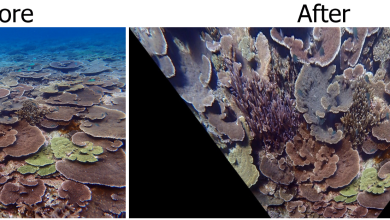Seeing Red: The History and Impact of a Powerful Color
New Exhibition at Foosaner Art Museum Opens Jan. 21
MELBOURNE, FLA. — The color red has inspired artists’ imaginations and seduced viewers for millennia.
A new exhibition at Florida Institute of Technology’s Foosaner Art Museum combines new research and original scholarship to explore the history and widespread use of cochineal, an insect-based dye source for the color red whose origins date to the pre-Columbian Americas.
The Red That Colored the World opens Saturday, Jan. 21, and runs through April 15 at the museum, 1463 Highland Ave. in the Eau Gallie Arts District of Melbourne.
The exhibition translates the cochineal story into three dimensions, and starts with tracing the journey of this precious liquid and its use in art from Mexico to Europe to the U.S. Anchored by more than 60 objects, including textiles, sculpture, paintings, decorative arts and clothing, from the Museum of International Folk Art in Santa Fe, New Mexico, private lenders, and other museums, the exhibition explores the history of cochineal and the seductive visual nature of red. The objects reflect the unique international uses of the color, revealing its role in the creative process, and the motivations of artists in their choice of materials.
Artists and dyers for centuries strived to find the color source to rival the best reds of nature and to express the spirit, symbolism and sustenance of life. For many the quest ended in the Aztec marketplaces of 16th-century Mexico, where Spanish explorers encountered the American cochineal bug. The bug helped create an unparalleled range of reds along with potent economic value. Its ensuing global spread spawned a story of empire and desire that pushed art, culture and trade to the edge of the unknown.
Pre-Columbian weavers used cochineal. So did El Greco, Tintoretto, Rembrandt and Van Gogh. Hispano saint makers and Navajo weavers of the 18th- and 19th-century American Southwest followed suit, and then the 20th century Spanish design icon Mariano Fortuny. Though synthetic dyes eclipsed natural sources starting in the late 19th century, cochineal’s cachet never completely faded.
The Foosaner exhibition follows the story to today, where cochineal and the color red remain hot commodities in cosmetics and commercial products, contemporary art, fashion and design, and other expressions of popular culture.
The Red That Colored the World, organized by the Museum of International Folk Art and circulating through GuestCurator Traveling Exhibitions, has been made possible in part by a major grant from the National Endowment for the Humanities.
Find out more at www.foosanerartmuseum.org or by calling 321-674-8916.
###





